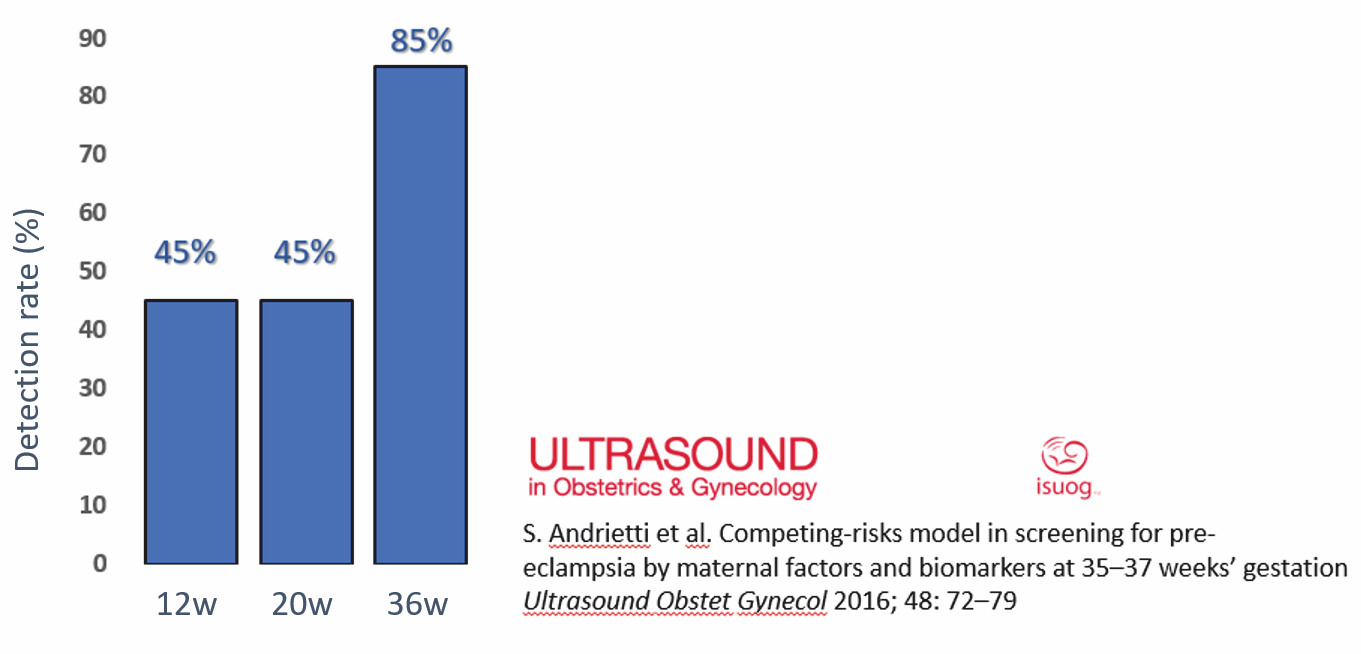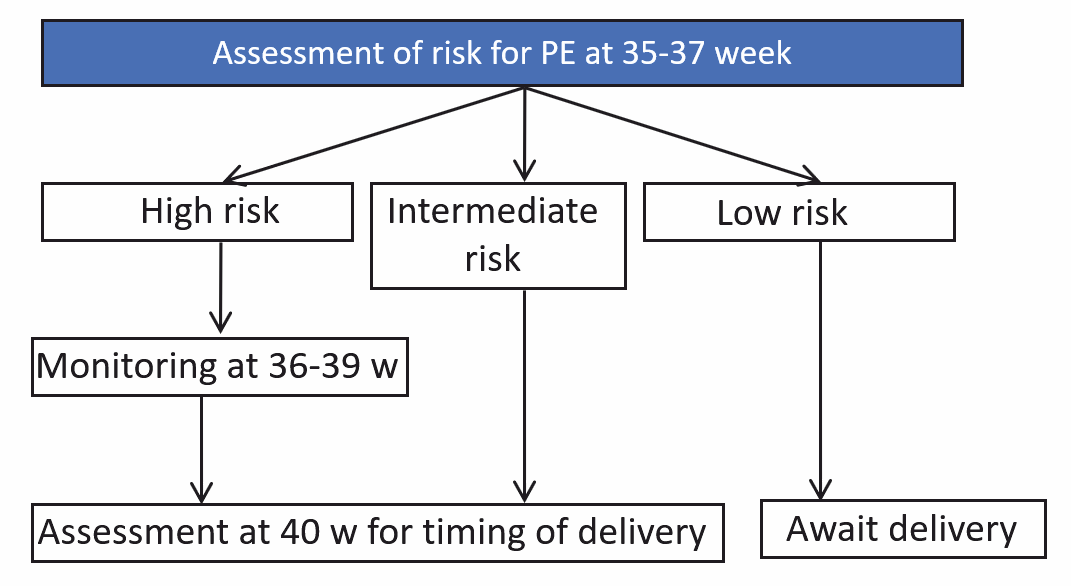Preeclampsia screening in the 35th-37th gestational week

During the ultrasonic examination of foetal growth and wellbeing in the II. semester, it is possible to identify women at risk who may develop late preeclampsia after the 37th week with 85% accuracy.

The discovery of women in the risk group of late preeclampsia in the III. trimester during the foetal anatomical screening is very important, since the intensive monitoring of the mother and foetus allows for the timely detection of symptoms of the condition and the associated foetal intrauterine growth retardation. This provides an opportunity to start preparatory treatment for foetal lungs in a timely manner in the case of a risk of preterm delivery, and to schedule a delivery, thus preventing serious complications.
- High-risk group. This group consists of women who, as a result of the screening, had a risk of preeclampsia before the 42nd week of pregnancy greater than 1:100. The group consists of 20% of women who participated in the study and 90% of them develop preeclampsia before the 40th week of pregnancy. These women are regularly monitored by a doctor, measuring arterial blood pressure and performing urine analysis for the determination of protein in the 36th-39th week of pregnancy. For women who experienced foetal growth retardation or developed hypertension during the 36th week of pregnancy, an ultrasonic examination is performed at regular intervals to evaluate foetal growth and the status of wellbeing.
- Medium-risk group. This group consists of women who, as a result of the screening, had a risk of preeclampsia before the 42nd week of pregnancy between 1:100 and 1:200. The group, together with women in a high-risk group, consists of less than 60% of participants in the study and among them there are almost all women who develop preeclampsia after the 40th week of pregnancy. They are suggested to undergo a reassessment of the risk during the 40th week of pregnancy, in order to schedule the best time for delivery.
- Low-risk group. This group consists of women who, as a result of the screening, had a risk of preeclampsia before the 42nd week of pregnancy less than 1:200. The group consists of 40% of women who participated in the study, and these women become reassured that in 99.9% of cases, they will not develop preeclampsia before delivery and they can calmly expect the beginning of a spontaneous delivery.

Read more:
